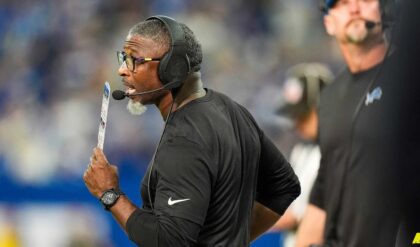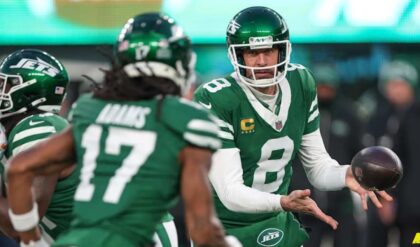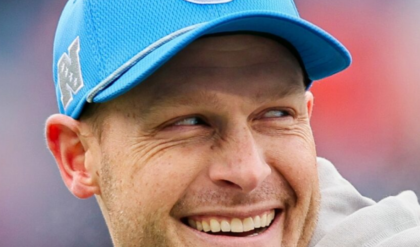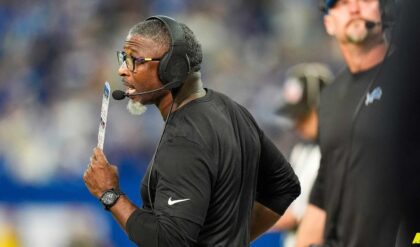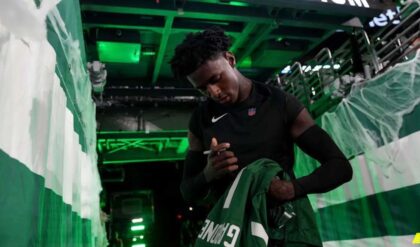Montreal Canadiens forward Jake Evans is in an excellent position from a career standpoint. Not only is he a versatile, hard-working centre, he’s also in the midst of his most productive season, quite the blessing for an impending free agent.
According to Pierre LeBrun, Evans is the type of player teams such as the New Jersey Devils are looking to acquire, which isn’t particularly surprising, though we should note that Renaud Lavoie has suggested both Evans and the Habs are interested in a contract extension, complicating a situation that already required a healthy amount of due diligence before moving forward.
The last time we discussed the Evans dossier, I was quick to point out his shooting percentage, which was verging on 33 percent. In other words, Evans, who usually scores on fewer than 10 percent of his shots, was tripling his career average in shooting efficiency, a considerable red flag when evaluating the value of extending a forward.
With all due respect to Evans, signing a 28-year-old player after they experienced an unsustainable improvement in the shooting department often leads to the player become an albatross from a salary-cap perspective, a cardinal sin for a general manager navigating the choppy waters of a salary-cap bound sports landscape.
To put a fine point on the risk involved, Evans’ all-situations shooting percentage has dropped to 28.6 percent in 2025, which is still incredibly high. Consequently, he’s been kept off the scoresheet in the last four games. It’s a good reminder that we’re not trying to be mean when pointing to the shooting percentage as a potential issue.
That’s why a trade may be the best way forward.
With that in mind, even with the dip in shooting, Evans is still on pace to score 21 goals and 27 assists in an 82-game prorated season, far and away his best output since joining the team in 2019-20. That number is likely to drop, but for now, we’ll use it as a baseline to establish how much Evans may be able to command as an unrestricted free agent.
Jake Evans Mock Arbitration Hearing
If we treat this like an arbitration hearing, one of the least enjoyable experiences for both athletes and general managers (but more so for the former than the latter), we can establish a few key points that would be studied when attempting to gauge Evans’ value.
Both groups would present comparable contracts in the NHL, while also keeping tabs on things such as age, and health. Of course, they’ll also point to the player’s production, though they don’t simply focus on one season, as it rarely presents a clear picture of the expected offensive impact.
In this case, Kent Hughes and Co. would probably argue Evans is closer to a 30-point player than a 50-point player when keeping other seasons in mind. He’d also likely explain that at 28 years old, the upcoming contract would have to take under consideration that most players peak between 23 and 28. Finally, the last topic management could bring up in favour of keeping the contract cost low is Evans’ underlying numbers, which have been far from impressive. The quick counterargument would be bringing up his usage, which is far from a situation that’s conducive to producing strong shot control stats.
As for the other camp, they’d establish Evans’ value to the Canadiens beyond his solid fourth-line production. Not only does Evans play an important role on the penalty kill, he’s a trustworthy centre who has a penchant for scoring big goals when his team needs it the most. Thus, even if he doesn’t have a letter on his chest, Evans should still be considered a player who leads by example. He’s also a home-grown talent, so to speak, and there are very few examples of drafted players emerging from the Canadiens’ AHL affiliate over the course of the last couple of decades. In that sense, he defied the odds in a situation that was clearly not conducive to developing NHL players.
Jake Evans Contract Comparables
If we assume Jake Evans will re-ignite his scoring touch and finish the season with 48 points, and then combine it with his production last year of 28 points, it gives us an average 82-season scoring pace of 38 points over the course of two years. That will be the number we will use to find players who signed a contract extension in the same situation.
The important thing to monitor when comparing contracts is not the annual average value (AAV), but rather the percentage of the salary cap involved at the time of signing the deal, because the salary cap is constantly changing. Therefore, a player who signed for five percent of the salary cap in 2020 is actually making less than five percent once the salary cap goes up in the following years.
By keeping an eye on the percentage of the salary cap, we’ve been able to come quite close to predicting the range of various Canadiens contracts, including Cole Caufield’s eight-year extension., as well as Alex Newhook’s four-year extension.
It’s a little more complicated in Evans’ case, as most comparable players signed a contract at a much earlier age, closer to 22 or 23 years old. That eliminates many of the potential contracts that would normally serve as examples of what to expect.
There are three players who come to the forefront if we attempt to keep age in the equation: Brett Howden, Evan Rodrigues, and Frederick Gaudreau. Howden was a little younger when he signed, but he produced less than Evans in the previous two years. Rodrigues was a little older, but he produced more than Evans in the previous two years. Gaudreau was also slightly older, but he outproduced Evans in the two years leading up to his contract extension.
Howden’s contract, five years x $2.5 million AAV, accounted for 2.85 percent of the salary cap, while Rodrigues’ deal, four years x $3 million, was 3.6 percent, and finally, Gaudreau took up 2.5 percent with his five year, $2.1 million AAV cap hit.
We have to remember playing in Montreal is not as financially advantageous from a tax perspective as it would be in Nevada, which leads me to suggest his overall cap hit will be closer to 3.5-4 percent of the total expenditures. I also don’t think the team is in position to demand a hometown discount, nor should Evans accept one, as this will be the only opportunity of his career to cash-in on unrestricted agency after a sudden uptick in scoring.
Montreal Canadiens and Jake EvansBrass Tacks
Seeing as the salary cap next season is expected to be $92.5 million, a 3.5 percent expenditure would be in the $3.25 million AAV range, while a four percent expenditure would be closer to $3.7 million AAV.
Whether that’s an acceptable number for either party remains to be seen, and term always comes into play, as it provides a little insurance for players who are expected to decline in the final years of their contracts.
Offering Evans a long-term deal would surely bring down the AAV, but it would also carry the risk of adding an albatross contract to the books, the exact type of situation general manager Kent Hughes must avoid if the Canadiens are to maintain enough salary cap space to add important elements to the lineup once the team is ready to compete.
All Jake Evans and NHL contract information via Puck Pedia.
News
NY Jets HC interviewee refuses meeting with Patriots
One of the NFL’s most coveted head coach candidates met with the New York Jets today, but he has no interest in speaking with the New England Patriots. The Jets met with Detroit Lions defensive coordinator Aaron Glenn in a virtual interview on Thursday. New…
Jets Insider Calls Aaron Rodgers Return ‘Surprising’
There likely will be rumors and speculation about the future of New York Jets quarterback Aaron Rodgers until the day he announces whether or not he is playing in 2025. Rodgers is a future Hall of Famer coming off a…
Jets Completed Interview With Aaron Glenn For HC Vacancy
The New York Jets announced they’ve completed an interview with Lions DC Aaron Glenn for their vacant head coaching position. The interview was virtual since Glenn’s season with Detroit has yet to end. Glenn is a very popular coaching candidate this offseason and…
Jets’ Sauce Gardner Takes Hard Stance On His Future With New York
The New York Jets aren’t in a great place as an organization right now. Despite being loaded with talent, New York has struggled over the last few years. Nothing has been as disappointing as the 2024 season though. The Jets…
Jets’ Potential Top Draft Pick Dominates In College Football Playoff Semifinal
The New York Jets hold the No. 7 pick in the 2025 NFL Draft and there’s a lot they could do with that pick. While the Jets could pursue a quarterback, cornerback, or wide receiver, one of the biggest holes on the…
Jets Top Predicted Head Coach Target Rejects Patriots
The New York Jets are kicking it into high gear when it comes to the head coach and general manager positions. Both spots are open and the Jets have been aggressive to kick off the offseason. There isn’t another team…
End of content
No more pages to load






